Recently, the Intel Core i5-3330 was launched as the entry point to the desktop Core i5 series. Intel’s Core i5 chips are considered Intel’s mid-range mainstream offering. Realistically, the Intel Core i5-3330 at around $190 will satisfy most user’s need for performance. Compared to the Core i5-3470, the Intel Core i5-3330 has a 200MHz lower base clock and a 400MHz lower turbo clock. Also the Intel HD 2500 graphics on the Intel Core i5-3330 has a 50MHz lower max frequency but the same base. Graphics wise, is is not a noticible difference. CPU speed wise, the Intel Core i5-3470 is a bit faster as will be seen. Although the Core i5 line does not support ECC memory, it is still very popular in servers and workstations. Some workloads see either no benefit from Hyper-Threading or even a penalty, so in these cases saving money and using a lower cost Intel Core i5 CPUs can be very attractive. Let’s look at what the Intel Core i5-3330 offers in terms of performance.
Test Configuration
The trend with Z68 and Z77 chipsets are that the integrated GPUs are more than adequate for basic 2D output. If you are looking for a workstation with a lot of CPU need but where 3D GPU performance was not needed, then Intel’s on-die graphics are going to be “good-enough” for many users one one can use the third-gen PCIe slots for more I/O performance. With that being said, most Z77 buyers will still use discrete GPUs.
- CPU(s): Intel Core i5-3330
- Motherboard: ASUS P8Z77-V Pro
- Memory: 32GB (4x 8GB) G.Skill Ripjaws Z DDR3 1600
- Drives: Corsair Force3 120GB, OCZ Vertex 3 120GB
- Chassis: Norco RPC-4220
- Power Supply: Corsair AX850 850w 80 Plus Gold + PicoPSU 150XT with 150w power supply.
Intel Core i5-3330 Performance Tests
I will start off this section by saying that the standard test suite was built to test 1-8 thread single CPU systems. Examples are Sandy Bridge and Ivy Bridge Intel Xeon CPUs. Over time, we have been slowly altering the mix. Clearly, one would expect a different workload between dual Intel Xeon E5-2690 CPUs and something found in a low-end, low-power server like an Intel Pentium G2120. Moving to the 16-64 core realm where the AMD Opterons and Intel Xeon E5 CPUs dominate, it will become ever more important to develop a second test suite.
Cinebench R11.5
We have been using Cinebench benchmarks for years. Cinebench has been added to the test suite because it does represent a valuable benchmark of multi-threaded performance. We have had quite a few readers contact me about this type of performance for rendering performance. Cinebench R11.5 is something that anyone can run on their Windows machines to get a relative idea of performance. After seeing Cinebench scale from one to 64 cores, it has become a favorite.
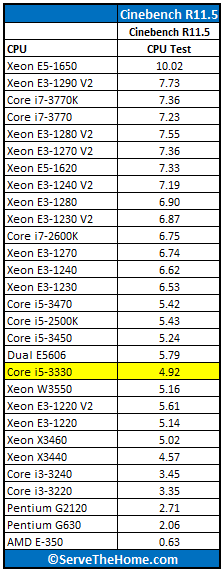
Cinebench shows solid multi-threaded performance. The speed is not up to the other Core i5 parts likely due to lower base and turbo clock speeds.
7-Zip Compression Benchmark
7-Zip is an immensely popular compression application with an easy to use benchmark.
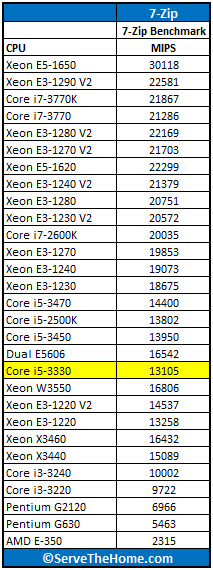
Here the Intel Core i5-3330 has a decent showing. Due to price segmentation, the Intel Core i5-3470 is another strong alternative.
TrueCrypt Encryption Benchmarks
With Intel’s focus on its AES-NI features TrueCrypt can look a bit skewed. Unlike some dubious drivers over the years that were optimized for benchmarks over real world application, Intel’s AES-NI feature does encompass the addition of specialized hardware. This specialized hardware has many practical uses. For example, users of Solaris 11 can utilize the AES-NI features to see much higher throughput on encrypted volumes. AMD has started offering AES acceleration so it is a good test for most CPUs now.
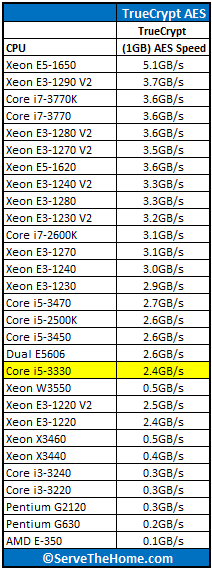
If one is looking for AES encryption acceleration more than anything else the Intel Core i5-3330 is an interesting choice. One can see there is a huge gap here between the Intel Core i5-3330 and the Intel Core i3-3240. This is largely due to hardware AES-NI support.
Handbrake 0.9.5 x264 Encoding Benchmarks
We are still using Handbrake v0.9.5. This is just to keep a consistent look at CPUs that have been tested with v0.9.5. We will begin to collect data on v0.9.6 and start using that once we have critical mass. Either way, Handbrake is an extremely popular x264 encoding and transcoding application. It is very common practice these days to encode video for mobile devices. Quick transcoding is an important CPU application.
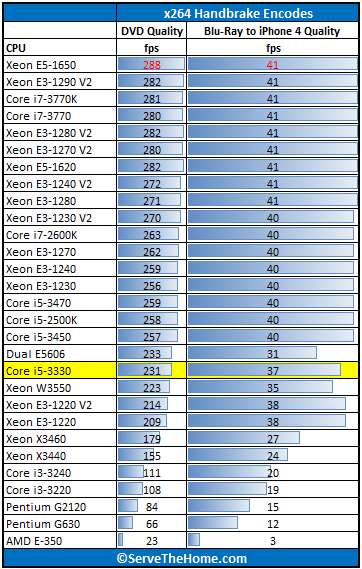
As has been mentioned previously, this is more of an illustrative example until the Windows 8 benchmark suite comes out. The Intel Core i5-3330 performs well in the Handbrake x264 results, but it is not seeing the benchmark’s performance wall.
Power Consumption
Power consumption is a top concern for hardware manufacturers. We test using an Extech 380803 True RMS power analyzer. It is a really nice unit that even records usage over time.
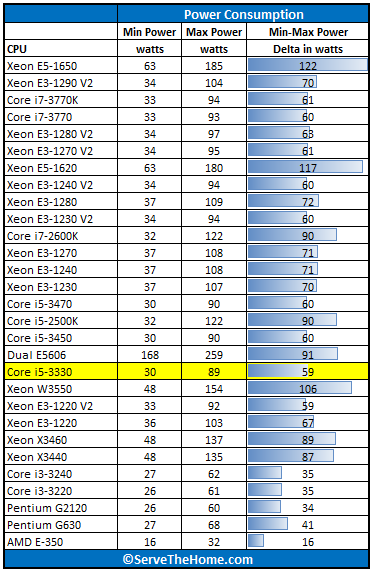
Power consumption is in-line with expectations. The Intel Core i5-3330 runs about on part with the Core i5-3450 and Core i5-3470 samples.
Conclusion
Overall the Intel Core i5-3330 is a solid mid-range performer. Realistically, performance between this chip and the Core i5-3470 is not that great. The Core i5-3470 is only $10 more though at retail, so that is a strong competitor. I do not think one could go wrong with the Intel Core i5-3330 unless they genuinely need more power.
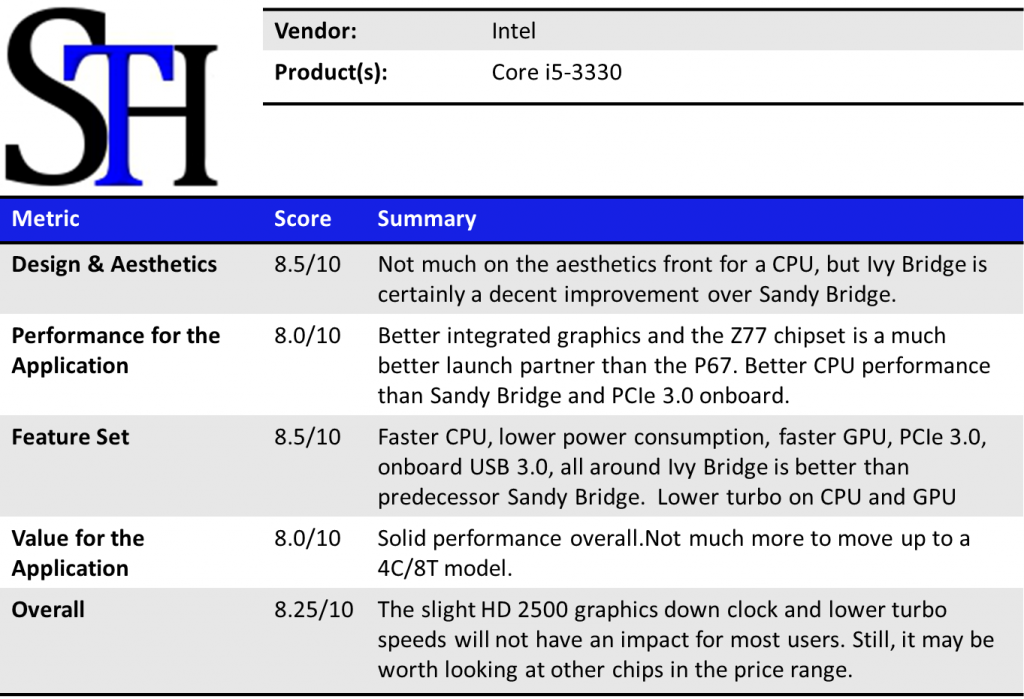

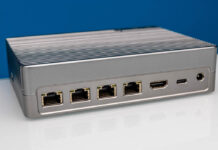
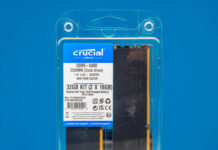
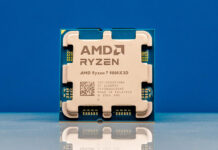
Hmmm. About 11% lower performance in very benchmark than a i5-3470, same idle power, 1 watt less at load…all to save $10? No material cooling advantage, no significant power savings, no advantages to speak of at all except a very, very small (<5%) savings at initial purchase.
I don't understand why this part would ever be chosen by anyone unless you were doing a build with thousands of units.
One could not find i5-3470, so its good to know that i5-3330 still pretty decent despite their small price difference.
when u are doing a budget build, even 10$ matter. :)
I recently purchased the core i5 3330 for a reduced price of £90(£41 after trade in ) and ive combined it with a radeon HD6790 and 8gb of xms3 ram (1333mhz) … and all I can say is Patrick has hit it on the nail with this review !
first of all I don’t overclock my processors so the lack of “K” on the cpu wasn’t a issue .. and 3ghz seems to be ok,especially when your talking “i5 ” …. but what makes the i5 3330 so special is I upgraded from the “Pentium G620” ,so as you can imagine the improvement was quite significant
I ran 3dmark03 and there was a 10,000 point increase and in general all games were much more playable …. crysis2,bioshock 2 and metro 2033 were especially better
in summary the i5 3330 is a excellent processor and more than enough for any gamer especially when combined with a decent graphic card …. and although a i3 would be a good choice for the budget gamer it makes more sense to spend that little bit more and buy this processor
nice review Patrick !